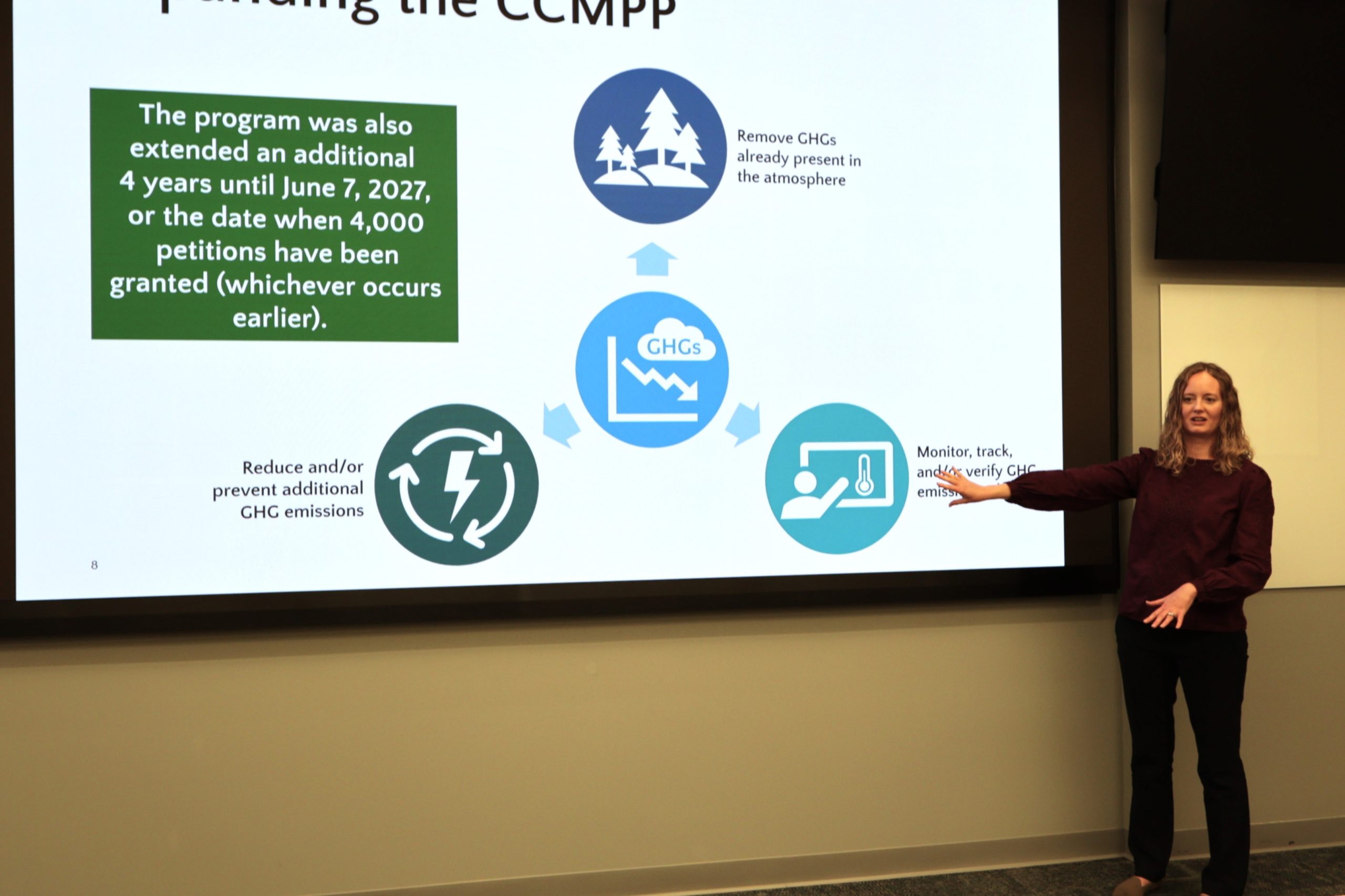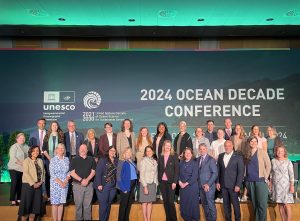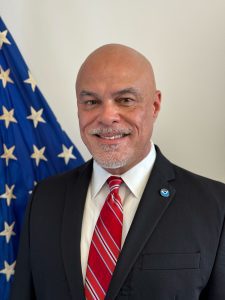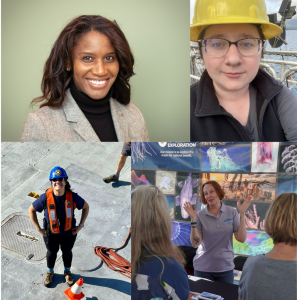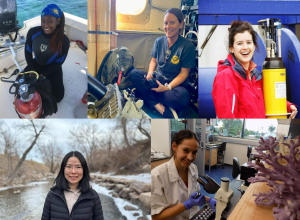A Q&A with NOAA’s Kristen Schepel, currently on a detail from NOAA with the U.S. Patent and Trademark Office
This year, Kristen Schepel from NOAA’s Geophysical Fluid Dynamics Laboratory is participating in an employee exchange (known as a detail) with the U.S Patent and Trademark Office (USPTO) in Washington, D.C. Her assignment: Help patent examiners and others at the USPTO understand climate change and the need for innovations that can help predict and measure its impacts.
Schepel is one of a handful of people participating in the exchange. Three USPTO employees have also been assigned to work at NOAA as a part of this project.
We sat down to talk to her about her project and discuss the ways that patents could be important to climate change work.
What motivated you to apply for this detail? What have you been doing since you arrived?
In my role as the science policy and project manager at NOAA’s Geophysical Fluid Dynamics Laboratory, I especially enjoy doing collaborative work with other offices, and thought this detail would be a great way to foster that interest and expand my skill set while also learning more about intellectual property and its role in climate innovation.
The first task the USPTO wanted me to advise them on was the expansion of their Climate Change Mitigation Pilot Program, a program that helps expedite the patent application process for innovations that limit the magnitude of climate change. The program was initially launched in June 2022 and did not garner as many applications as expected in its first year.
I advised them to consider all of the types of technologies that can be included under the umbrella of climate change mitigation, taking into account both the IPCC report and the National Climate Assessment, as well as the goals of the current Administration. From there we were able to expand the criteria from just technologies that reduce greenhouse gas emissions to technologies that reduce, remove, prevent, and/or monitor greenhouse gas emissions. Since announcing the expansion and extension of the program in June 2023, the number of applications has increased by about 70%.
We are now exploring a complimentary patent pilot program for climate adaptation-related innovations.
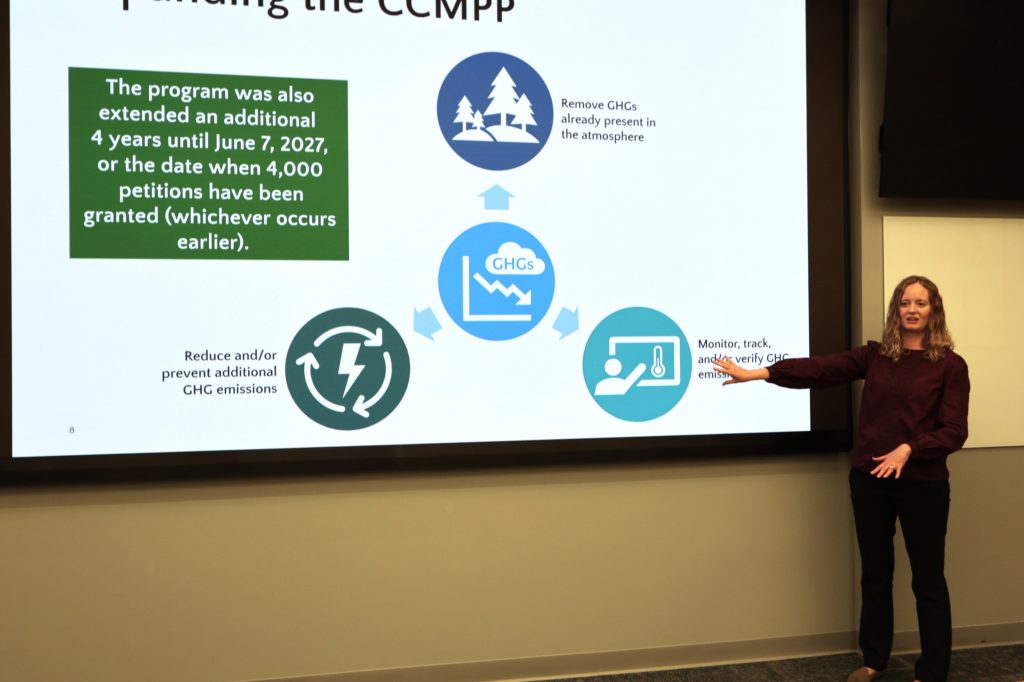
Why do you think overall it’s important to encourage researchers to patent their ideas and inventions? What is the benefit of patenting climate innovations?
Patenting promotes the sharing of knowledge and follow-on innovation, while also protecting the inventor. I think sharing is critical right now, especially when we are talking about climate-related innovation. We have many climate goals to reach by 2030 and 2050, and one way to shorten the path to our goals is to build off of each other’s knowledge and innovation.
Why do you think that innovators in the federal government sometimes hesitate to seek out patents?
I think it is mostly due to a lack of knowledge – about the process, eligibility, and benefits. Many scientists see a patent as more paperwork that takes time away from the science itself, without much return for the extra effort. They do not realize that there is a support system in place through NOAA’s Technology Partnership Office to help them through the patenting process. The USPTO detailees at NOAA are developing and providing training to NOAA employees about these misconceptions and the benefits of protecting their intellectual property. I am excited to see the final product and how things change at NOAA as a result.
Are there thousands of possible climate innovations out there, being developed at NOAA and other government labs and agencies?
Absolutely! Climate innovation happens every day at NOAA, throughout the rest of the federal government, and beyond. However, only a fraction of these innovations are patented. Programs like the Climate Change Mitigation Pilot Program are intended to encourage people with eligible technologies to apply for patents by waiving certain fees and expediting the process.
What are some examples of topics/materials/concepts or ideas that you’ve introduced or explained at USPTO?
One topic I have discussed a lot at USPTO is climate mitigation vs. climate adaptation. Climate mitigation is limiting the magnitude of climate change, whereas climate adaptation is adjusting to changes in climate in order to reduce risks. I am in the process of developing training for patent examiners that will explain these concepts and how they work together to ensure climate resilience. This training will be led by climate experts (including scientists from NOAA), and will also highlight high-impact climate technologies within individual sectors (energy, transportation, etc).
It is important for patent examiners to have a comprehensive understanding of climate change so they can better determine whether or not to accept a patent application into the new Climate Change Mitigation Pilot Program. It is also important for the USPTO to understand the relationship between mitigation and adaptation as a whole, so they can broadly promote climate resilience and plan for future climate initiatives.
What’s next?
The USPTO and NOAA will be hosting a panel discussion at the 104th Annual American Meteorological Society Meeting in January 2024. The panel will feature NOAA Administrator Dr. Spinrad and USPTO Director Kathi Vidal as they discuss the importance of protecting intellectual property in the climate and blue economy space, and the challenges and opportunities available to help protect it. The meeting takes place in Baltimore, Maryland.
As for me, I am excited to bring the knowledge I gained from this experience back to my position at GFDL. GFDL is known for its expertise in climate science and climate model development, and it is critical to protect the integrity of the lab’s work in every way possible, including by protecting the intellectual property.
I also want to start a larger discussion at GFDL about innovation – not just about the innovation occurring at the lab, but also about how we might use our science to further innovation elsewhere. Our models can identify emerging problem areas in terms of climate change. Can we somehow take that information and use it to identify future areas of needed innovation? I think it’s possible.
